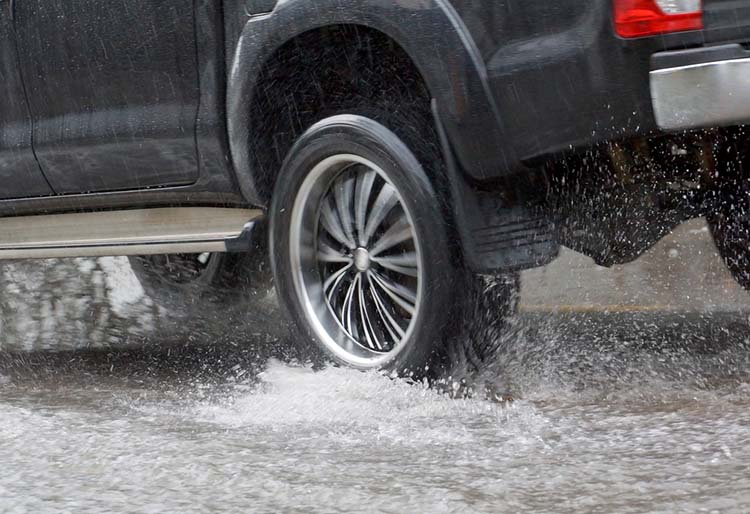Rainy days can transform a routine drive into a potentially dangerous journey, especially when tread wear and road conditions are not given proper attention. As the first raindrops hit the pavement after a dry spell, they mix with accumulated grease and oil, creating a slippery surface that challenges even the most experienced drivers. It’s essential to understand how tire performance is affected by these conditions and to regularly perform the penny test to ensure your tires are road-ready. By staying informed about the impact of rain on driving and practicing proactive tire maintenance, you can keep yourself and your loved ones safe. Join us as we explore safety tips for drivers and empower our community to make smarter, safer choices on the road.
Understanding Tread Wear
Tread wear is a critical factor in tire safety and performance. Let’s explore how it affects your vehicle’s handling and learn about a simple test to check your tires’ condition.
Effects on Tire Performance
Tire tread wear significantly impacts your vehicle’s performance, especially in wet conditions. As tires wear down, their ability to channel water away from the contact patch diminishes, increasing the risk of hydroplaning.
Reduced traction is the primary concern with worn tires. This affects braking distance, cornering ability, and overall stability. According to a study by AAA, driving on worn tires at highway speeds in wet conditions can increase stopping distances by up to 43%.
Handling and fuel efficiency are also affected by tread wear. Worn tires may lead to less precise steering and potentially increased rolling resistance, which can negatively impact fuel economy.
It’s crucial to monitor your tires regularly and replace them when necessary to maintain optimal performance and safety on the road.
The Penny Test Explained
The penny test is a quick and easy method to check your tire tread depth. This simple test can help you determine if it’s time to replace your tires.
Here’s how to perform the penny test:
- Take a penny and place it upside down with Lincoln’s head facing you inside the tire’s tread groove.
- If you can see the top of Abe Lincoln’s head, your tread depth is likely less than 2/32 of an You should replace your tires as soon as possible.
- Repeat this test in multiple spots across all of your
While the penny test is useful, it’s important to note that tire experts recommend replacing tires when the tread depth reaches 4/32 inch for optimal safety, especially in wet conditions.
Regular use of the penny test, combined with professional inspections, can help ensure your tires are always in safe condition for driving.
Impact of Rain on Driving
Rain can dramatically alter driving conditions, making it essential for drivers to understand how to adapt their driving behavior. Let’s examine the specific challenges posed by rain, especially after dry spells.

Road Conditions After Dry Spells
When rain falls after a prolonged dry period, it creates uniquely hazardous driving conditions that many drivers underestimate. This phenomenon is often referred to as “first rain” or “summer rain” effect.
During dry spells, oils, grease, and other substances accumulate on the road surface. When it first rains, these substances mix with water, creating a slippery film on the road. This slick surface significantly reduces tire traction, increasing the risk of skidding and accidents.
The danger is particularly high during the first 10-15 minutes of rainfall. As the rain continues, it gradually washes away the oily residue, but the initial period remains treacherous. Drivers should be extra cautious during this time, reducing speed and increasing following distances.
Additionally, after long dry periods, the ground can become compacted and less absorbent. This can lead to increased water pooling on roads, raising the risk of hydroplaning.
Safety Tips for Drivers
When driving in rainy conditions, especially after a dry spell, it’s crucial to adjust your driving habits for safety. Here are some essential tips to keep in mind:
- Slow down: Reduce your speed to account for decreased traction and
- Increase following distance: Allow more space between you and the vehicle ahead to provide extra stopping time.
- Use headlights: Turn on your headlights to improve visibility for yourself and other
- Avoid sudden movements: Brake, accelerate, and steer smoothly to prevent skidding.
- Be cautious of standing water: If possible, avoid driving through puddles to reduce the risk of hydroplaning.
It’s also important to ensure your vehicle is prepared for wet conditions. This includes:
- Checking that your windshield wipers are in good condition
- Verifying that your tires have adequate tread depth
- Ensuring your brakes are in proper working order
By following these safety tips and maintaining your vehicle, you can significantly reduce the risks associated with driving in rainy conditions.
Tire Maintenance for Safety
Proper tire maintenance is crucial for ensuring your safety on the road. Regular checks and timely replacements can prevent accidents and improve your vehicle’s performance.
Importance of Regular Checks
Regular tire checks are a fundamental aspect of vehicle maintenance that directly impacts your safety on the road. These checks help identify potential issues before they become serious problems.
Visual inspections should be conducted frequently. Look for signs of uneven wear, bulges, or cuts in the tire sidewalls. These could indicate alignment issues or potential tire failure.
Pressure checks are equally important. Underinflated tires can lead to poor handling, increased fuel consumption, and faster wear. Conversely, overinflated tires can result in a harsh ride and increased risk of damage from road hazards.
It’s recommended to rotate your tires at each oil change or around 5,000 to 7,500 miles, to ensure even wear. This practice extends tire life and maintains consistent performance across all four wheels.
Balancing your tires is another crucial maintenance task. Unbalanced tires can cause vibrations, uneven wear, and stress on your vehicle’s suspension components.

When to Replace Your Tires
Knowing when to replace your tires is crucial for maintaining optimal safety and performance. While the penny test provides a basic guideline, there are other factors to consider.
Age is an important consideration. Even if tread depth is adequate, tires generally should be replaced every 6-10 years due to rubber degradation. Check the DOT code on your tire’s sidewall to determine its age.
Uneven wear patterns can indicate the need for replacement, even if some parts of the tire still have adequate tread. This could be due to alignment issues or improper inflation.
Look out for these signs that it’s time to replace your tires:
- Tread wear indicators are visible
- Cracks or bulges in the sidewall
- Excessive vibration while driving
- Frequent loss of tire pressure
Remember, replacing tires in pairs or as a full set is often recommended to maintain balanced handling and traction.

